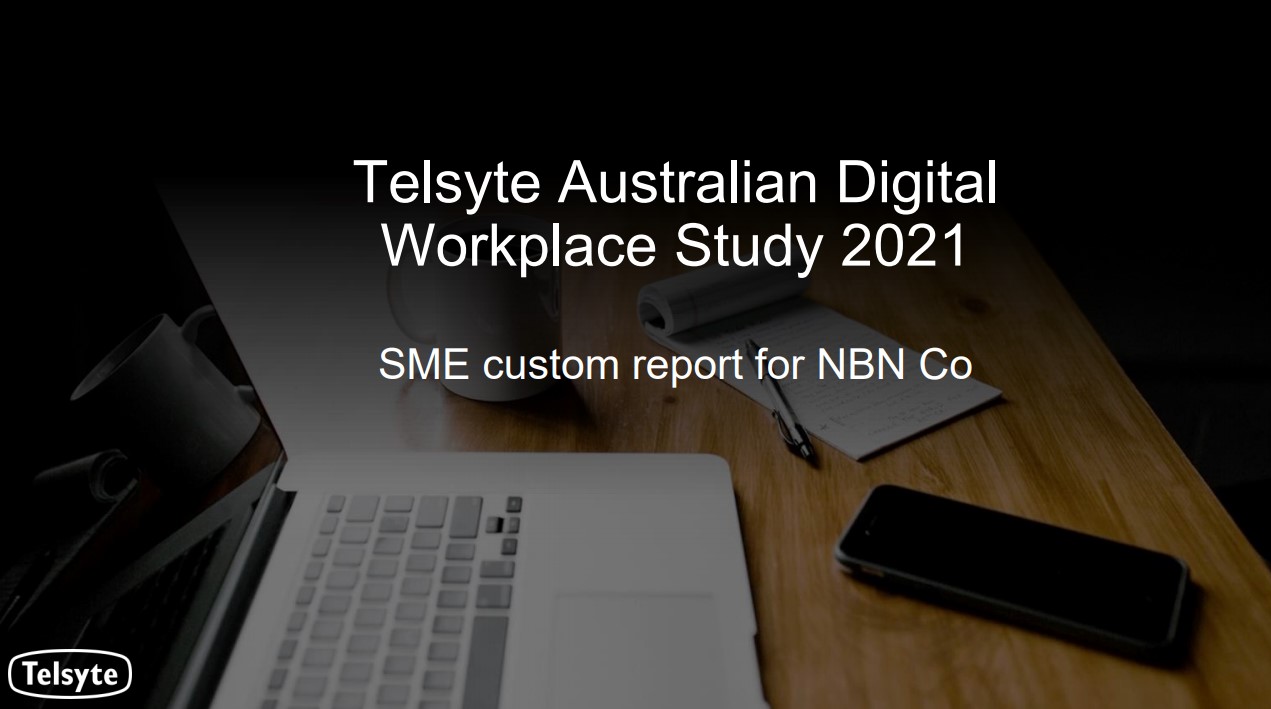Helping businesses unlock the value of their tech investments
In a world still reeling from the effects of the global COVID-19 pandemic, connectivity and technology have been a lifeline to small and medium businesses (SMBs).
During this ‘survival mode’, both technology adoption and digital transformation have accelerated.
And while many SMB leaders have demonstrated an appreciation for the important role technology has to play in their business, and are excited by the possibilities it presents, putting that knowledge into best practice can be challenging.
Watch the webinar
Balancing digital acceleration: opportunities and challenges for small and medium businesses.
Strategy vs opportunity
To help SMBs unlock the value of their technology investments, we recently commissioned the Telsyte Australian Digital Workplace Study 2021.
Conducted by emerging technology analyst firm Telsyte, the study surveyed Australian SMBs with five to 199 employees.*
It found that more than three quarters of respondents had invested in technologies with high connectivity requirements, identifying video conferencing, employee devices, cloud and cybersecurity as the top areas for investment.
According to the research, the majority of SMBs with a digital transformation strategy had those plans fast-tracked by the COVID-19 pandemic.

Yet, over a third of SMB leaders surveyed (38 per cent) didn’t think they were adopting technology strategically – and less than half (44 per cent) had a digital strategy at all.
There’s a pattern in the data that suggests much of the technology adoption happening within SMBs may be more opportunistic than strategic.
That means these businesses may not be maximising the value of their technology investments.
“The small and medium business community understands the importance of digital technologies, however our survey found that less than half have a digital strategy,” says Foad Fadaghi, Managing Director at Telsyte.
“It highlights an opportunity to provide businesses with visibility around technology investments that had substantial financial and non-financial impact for small and medium businesses to help them adopt technology more strategically.”

Lifting the lid on technology performance
The small and medium business community is the backbone of the Australian economy, accounting for almost half of employment with just under five million people working for small businesses in June 2018**.
At nbn, we are trying to find ways to help these businesses lift their digital capability and make informed, strategic decisions when it comes to investing in technology.
This starts with sharing information about how technologies are delivering both financial and non-financial impact on the business.

Telsyte asked the small and medium businesses that participated in the survey to share the level of impact different technologies had on their financial and non-financial key performance indicators (KPIs).
By financial KPIs we mean cost savings, revenue, profit margin, sales and tax-related impact, whereas non-financial KPIs relate to non-revenue or cost related factors, such as customer or employee satisfaction, relationships, productivity, quality of products and brand reputation.
Top technologies based on impact
According to the study, video conferencing was the technology investment delivering the most significant impact on both financial and non-financial KPIs of small businesses.
The majority (81 per cent) of SMBs agreed that video conferencing technology has a good or substantial impact on financial KPIs. This was followed by Cloud IaaS (76 per cent), data management technologies (70 per cent), employee devices (66 per cent) and VoIP (60 per cent).
Three quarters (75 per cent) of SMBs agreed that video conferencing technology has a good or substantial impact on non-financial KPIs. This was followed by cybersecurity (69 per cent), workplace modernisation (69 per cent), employee devices (68 per cent) and IT outsourcing (67 per cent).
* The survey research was commissioned by NBN Co and undertaken by emerging technology analyst firm Telsyte with 374 ICT decision makers across Australian organisations with 5 to 199 employees. The sample is representative of the top 268,842 operating SMEs in Australia according to ABS and the study is accordingly weighted by industry and business size counts.
** Small business sector contribution to the Australian economy, 2020



